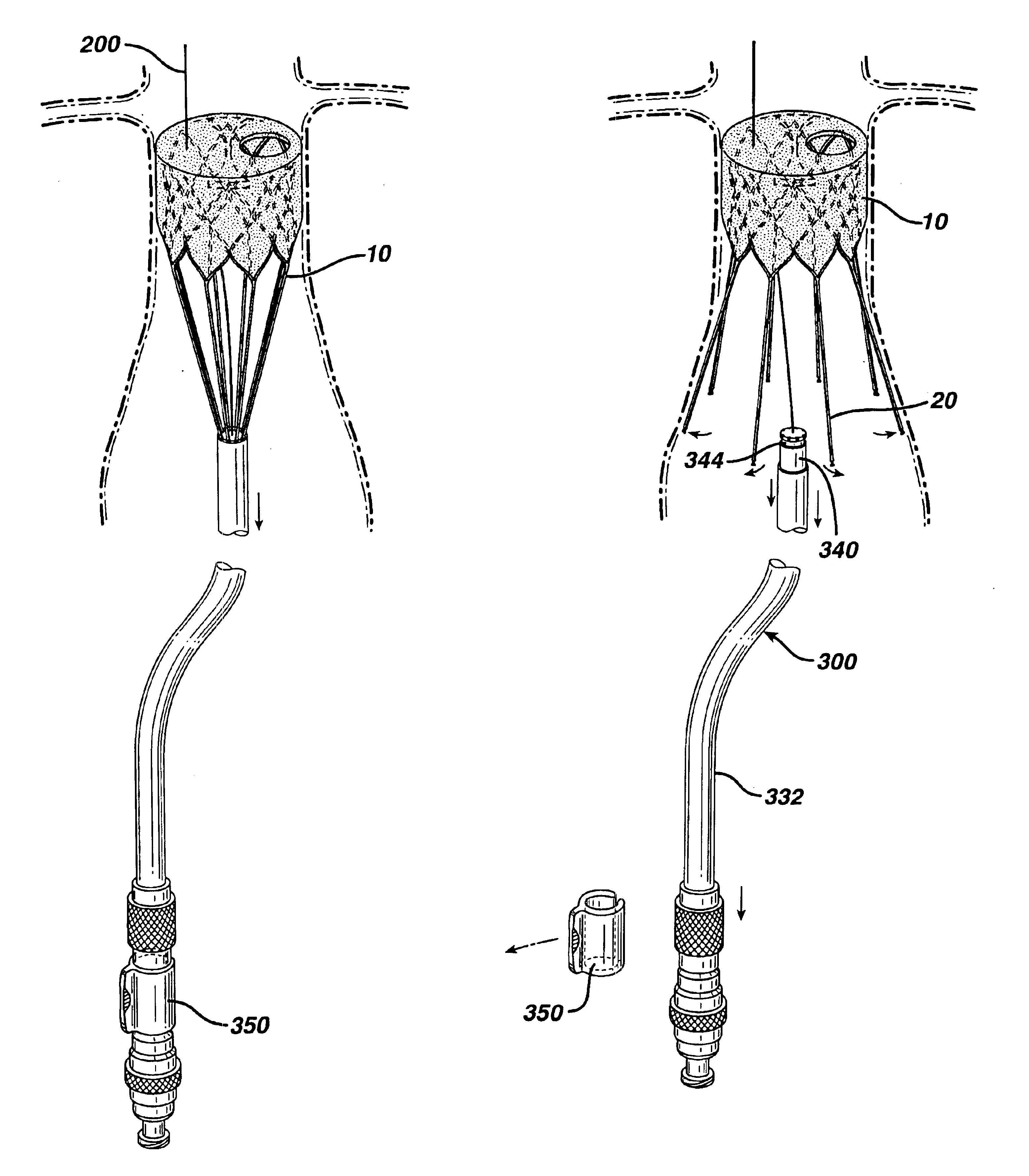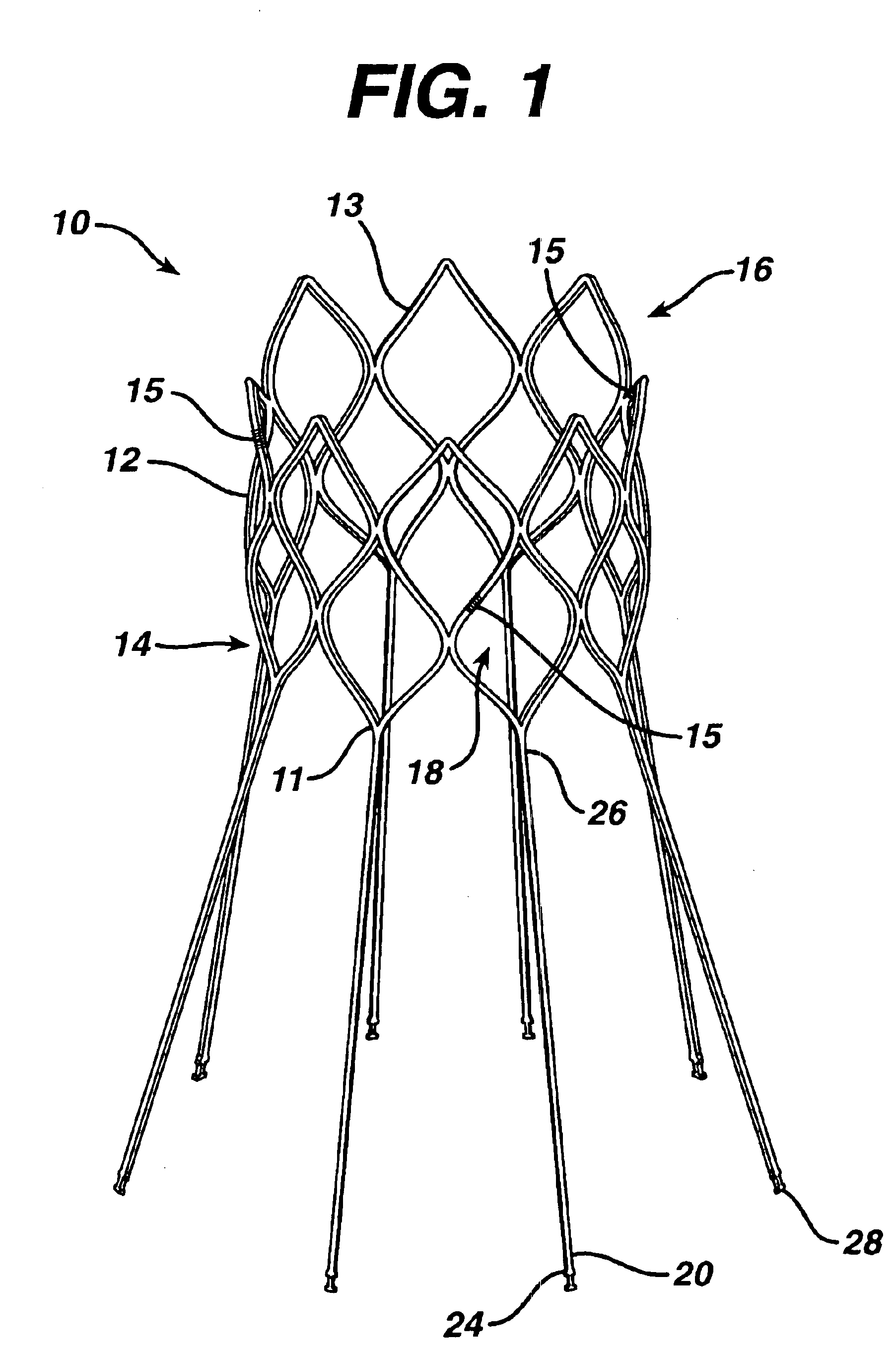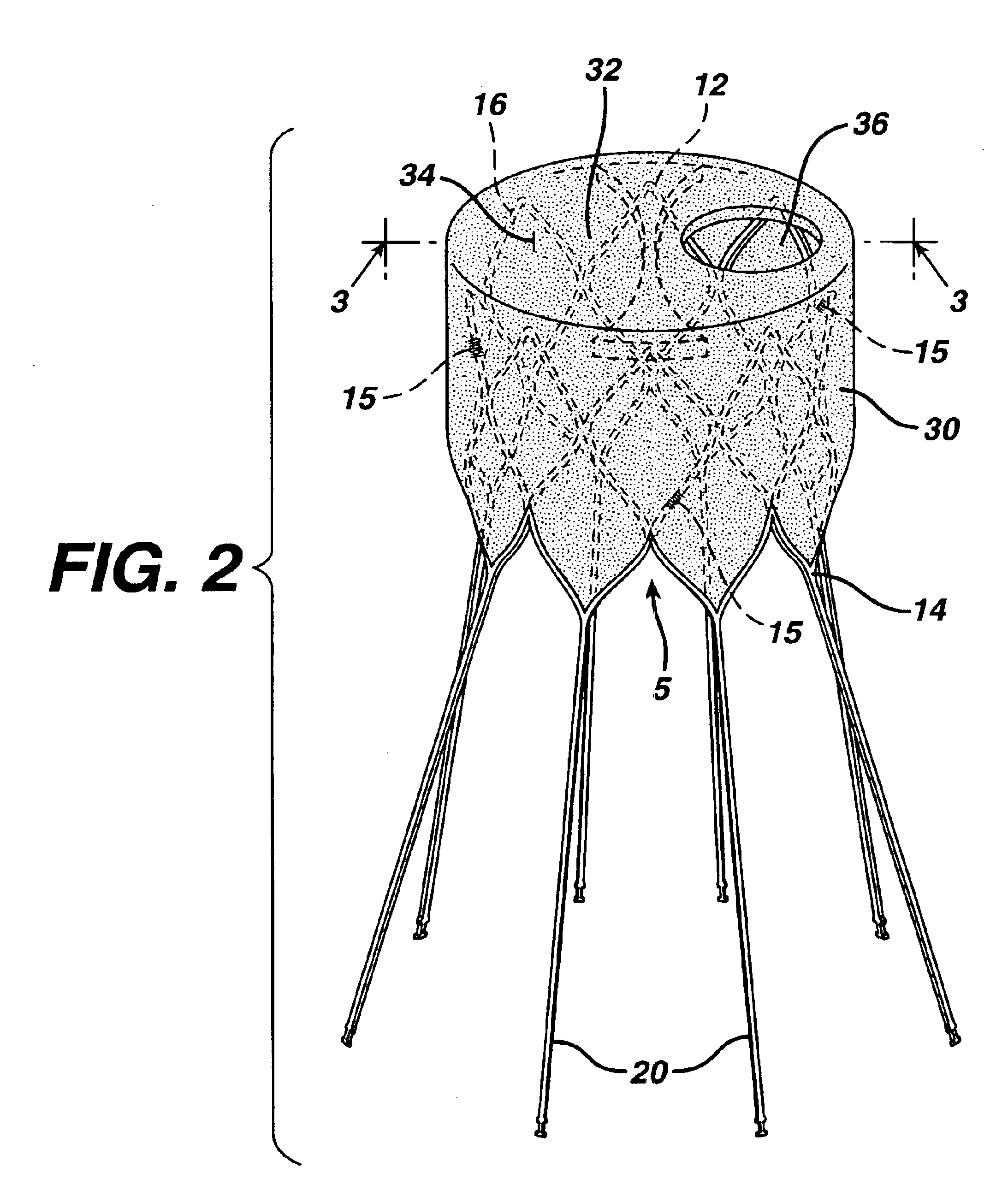Delivery apparatus for a self expanding retractable stent
a retractable stent and delivery apparatus technology, applied in the field of percutaneous delivery of stents and grafts and delivery apparatus, can solve the problems of fatal hemorrhage, rupture of the sac, and surgery involving the abdominal wall, and achieve the effect of reducing the risk of surgery
- Summary
- Abstract
- Description
- Claims
- Application Information
AI Technical Summary
Benefits of technology
Problems solved by technology
Method used
Image
Examples
Embodiment Construction
One preferred use of the present invention is to treat abdominal aortic aneurysms. A better understanding of the present device and its use in treating abdominal aortic aneurysms will be achieved by reading the following description in conjunction with the above incorporated references. In addition, the terms cranial and distal, will refer to the direction towards the head of the patient, and the terms caudal or proximal will refer to the direction away from the head of the patient.
Referring now to the drawings wherein like numerals indicate the same element throughout the views, there is shown in FIG. 1 a precursor stent 10, shown in FIG. 1. As will be discussed below, precursor stent 10 is to be deployed within the infrarenal neck, between an abdominal aortic aneurysm and the renal arteries of a patient to assist in repairing the abdominal aortic aneurysm. The precursor stent 10 is designed to be coupled to one or more stent grafts for directing blood flow through the aneurysm. Th...
PUM
 Login to View More
Login to View More Abstract
Description
Claims
Application Information
 Login to View More
Login to View More - R&D
- Intellectual Property
- Life Sciences
- Materials
- Tech Scout
- Unparalleled Data Quality
- Higher Quality Content
- 60% Fewer Hallucinations
Browse by: Latest US Patents, China's latest patents, Technical Efficacy Thesaurus, Application Domain, Technology Topic, Popular Technical Reports.
© 2025 PatSnap. All rights reserved.Legal|Privacy policy|Modern Slavery Act Transparency Statement|Sitemap|About US| Contact US: help@patsnap.com



